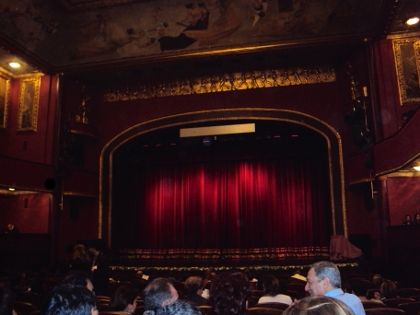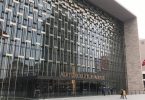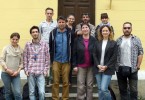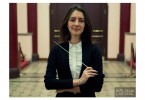Aneka Rusak
“You cannot feel here the high class atmosphere that you feel at opera houses elsewhere. People don’t dress up with in their best anymore. The first thing that surprised me personally, when I visited this opera was people wearing sports shoes,” says Cesar Sevillano Gallach, 22, an exchange student from Spain who often attends performances at the Sureyya Opera House in Kadikoy.
In most of the European cities opera and ballet performances are considered to be a part of elite culture. So, one should not be surprised at the comments coming from a young Spaniard.
The Sureyya Opera House in Kadikoy was originally established to function precisely for this purpose. However, after being used mainly as a movie theater for more than 80 years, a restoration project recently has returned the ornate, art-nouveau building to its original function.
”The building should not be approached under the ubiquitous and vague concept of ‘cultural center’, which would detract from its value. The inhabitants of Kadiköy and surrounding districts are undoubtedly in need of a concert and opera house, and this building is meant to meet this specific need. The restoration project reveals the original architectural features of the building and transforms it into the Süreyya Pasha Concert and Opera House in accordance with its original purpose,” declares the website that informs us about the restoration project and the history of the building.
However, as we understand from the comments of Gallach, how Turks perceive opera does not coincide with the perception of the Europeans.
In European history, originally the opera house was the place where people with relatively high economic power used to go, dressing up in elegant suits and dresses and showing their new acquisitions, i.e. jewels, furs, etc. It was an almost inaccessible place for the middle class. In savoir vivre books that tell you the rules of proper behavior there are a lot of chapters telling us how to behave and how to dress when attending an opera performance. “People had to be prepared not only by their appearance but also by their knowledge, it was especially obligatory for men. “If you compare this opera [Sureyya Opera House], with other traditional operas like Vienna’s traditional Opera building, or my home Opera of Valencia, the differences are enormous. In those Operas, the atmosphere is like living a dream for few hours,” explains Cesar Sevillano Gallach.
”On the day of the performance my peers and I dressed up formally and took the journey to the Opera house. Upon arrival we realized that we were perhaps overdressed compared to those around us who were about to see the same performance. We found this interesting as for all of our home countries in Europe it is a ‘high-class’ venue, often requiring a dress code of suits and dresses. The Turkish audience that was sitting in the auditorium with us were in casual clothes and no formality,”says Alexander Burrow, a student from England.
Another striking thing which distinguishes Sureyya Opera are the ticket prices.In most of the opera houses in Europe, tickets are extremely expensive; so not everybody can afford it. In here they cost as much as a cinema ticket. ‘The tickets to the performance cost 25 Turkish Lira, which is the full price. Being students we had the advantage of half price tickets (12.5 Lira). Now the great comparison here is that in England, to go and see an Opera the average cost is £38 GBP, converted to Turkish Lira this is 95TL; almost 4 times as expensive than in Turkey,” comments Alexander Burrow. However it does not have any negative influence in performance quality. ”At Kadikoy’s Opera the acoustics is quite good, keeping the traditional structure of the Opera, in a small building,” admits Cesar Sevillano.
The building of the Opera House was designed by politician Süreyya İlmen Pasha, who started the construction in 1924. It was originally opened on the 6th of March 1927. In the architecture we can find elements of European styles. The entrance was inspired by the Champs-Élysées Theatre in Paris, and the auditorium by classical German theaters.
Only theater performances were shown in the first few years. It was because of an incompleted stage and a lack of artist’s rooms. In 1930 the place was renamed as a Süreyya Cinema, after the designer.
The house also includes a ballroom, which was used for many years as a wedding hall. Years later its function was changed and was used as an apparel workshop.
In the 1950’s the opera building was donated by Sureyya Ilmen to the charitable organization called “Darüşşafaka Cemiyeti” for the advancement of education of orphan children. Later after Ilmens’ death, in 1955 it was run by his daughter and then his grandsons. In the ’/90s the house started to by renovated. This started in 1996 from an audiance hall and finished in 2006 with the completion of frescos on the ceiling and walls.
At last it was opened on 14th of December in 2007 by the oratorio ‘Yunus Emre’ by Ahmet Adnan Saygun. Nowadays the Sureyya Opera House offers to us various performances.
In spite of many differences in ambiance compared to opera houses in Europe, Sureyya Opera contributes to the cultural life of Istanbul. ”Opera is still being opera and the only thing you have to do to feel like attending a performance in one of the great opera houses in Europe, is to close your eyes, and let the music do its business,” said Cesar Sevillano Gallach.







